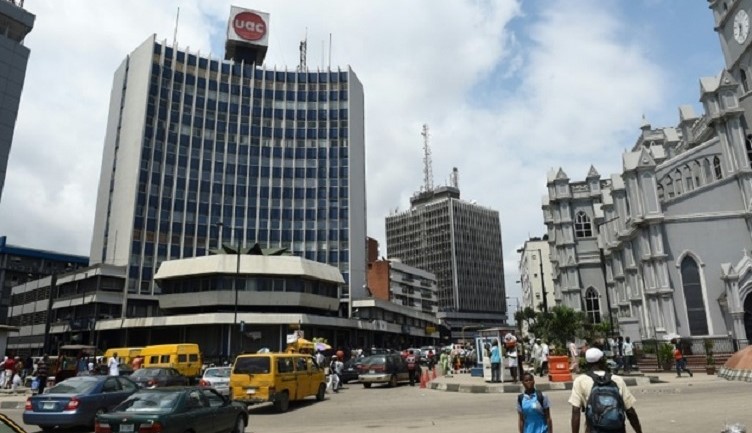Weak production, low investment in oil sector drag output growth to 3.1%
May 24, 2022902 views0 comments
BY CHARLES ABUEDE
Weak daily production at 1.4 million barrels per day, vandalism and theft of crude oil in Nigeria are having a negative impact on the economy of the country, eroding potential windfall gains in its lacklustre performance for the eighth consecutive quarter despite the price of oil averaging $98.5 barrels daily during the first three months of 2022.
The situation has been further compounded by the weak investment inflows into the economy through the oil sector seen in the sustained fall in active rig count to eight from a height of 16, three years ago, and have combined to keep Nigeria’s year on year real gross domestic product (GDP) growth to only 3.1 percent in the first quarter of 2022, marginally down from 3.98 percent in the last quarter of 2021.
The recent GDP report published by the National Bureau of Statistics (NBS), shows that the real growth in the first quarter of 2022 represents sustained positive growth for 18 consecutive months since the recession witnessed in 2020 when negative growth rates were recorded in quarter two and three of 2020 and indicates gradual economic stability and an improvement in economic performance during the review period. To this, Nigeria’s real GDP moderated to N17.35 trillion in the first quarter of 2022 while the nominal GDP hit N45.32 trillion during the same period.
Read Also:
- $26bn infrastructure investment drives Africa’s mining growth
- Dangote joins World Bank investment lab to drive emerging market growth
- FUGAZ banks lead financial boom with 57.6% growth, grossing N17.4trn
- Experts spotlight rooted barriers stalling Nigeria’s insurance growth
- Focus for the week: Fidelity Bank FY'24 Earnings Release - Robust growth…

A cursory analysis of the performance in Q1 indicates that there are some levels of recovery in personal household expenditure in accordance with the latest GDP (by expenditure approach) report, published by the Bureau, which highlighted that household personal consumption grew by 26 percent in real terms in 2021 compared with -1.7 percent a year earlier. Also, the first quarter growth was higher than the 0.51 percent growth rate recorded in Q1 2021 by 2.60 percentage points and lower than 3.98 percent recorded in Q4 2021 by 0.88 percentage points.
Nevertheless, quarter-on-quarter, real GDP grew at -14.66 percent in Q1 2022 compared to Q4 2021, reflecting a lower economic activity than the preceding quarter.
A look at the growth drivers during the quarter indicates that the non-oil sector continued its stellar performance and expanded 6.1 percent to beat both the first and final quarters of 2021 growth of 0.8 percent and 4.7 percent year on year respectively, as the oil sector continues to dwindle, contracting by 26 percent year on year and hitting the highest decline in 10 years.
From the impressive performance of the non-oil sector at 6.1 percent, which was jointly fuelled by the modest growth in the services and agriculture sectors by 7.4 percent and 3.2 percent apiece, the services sector grew on the back of immense growth recorded by the labour elastic sectors such as information and communications, trade, and financial and insurance.
Other vital drivers of the growth were manufacturing and agriculture which rode on the back of improved crop production by three percent and livestock production by 5.6 percent, year on year and was believed to have been helped by the favourable weather condition and intervention facilities, as well as the elevated food items prices which doubled levels from Q1 2021.
In addition, the information and communication sector has remained quite resilient. For instance, MTN Nigeria’s Q1 ’22 results revealed that steady double-digit year on year growth in data revenue continues to drive performance. This was mirrored in all other segments except voice.
In real terms, the non-oil sector contributed 93.37 percent to the nation’s GDP in the first quarter of 2022, higher than the share recorded in the first quarter of 2021 at 90.75 percent, and lower than the fourth quarter of 2021 recorded as 94.81 percent. The real growth of the oil sector by -26.04 percent indicates a fall of 23.8 percent points relative to the rate recorded in the corresponding quarter of 2021. Meanwhile, the Oil sector contributed 6.63 percent to the total real GDP in Q1 2022, down from the figures recorded in the corresponding period of 2021 and up compared to the preceding quarter, where it contributed 9.25 percent and 5.19 percent respectively.
But while the growth may not be highly encouraging at 3.1 percent, down from 3.98 percent last quarter, there is the need for the economy to grow at a considerable pace of at least five percent to five percent to achieve the much-needed inclusive growth and development and inch closer to its fair potential, growth-wise.
This, according to Business A.M. Intelligence can be achieved when there is a diversification into and expansion of the non-oil sector to boost revenue. In contrast, investment in oil and other booming sectors will help drive enhanced growth across the board. On the other hand, they noted that the cases of low investment into the oil sector may stall performance and soaring inflation, in view of the shocks in commodity prices will be a downside risk to growth in the second quarter and 2022 as we approach the general elections.
